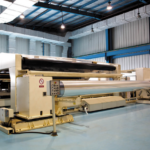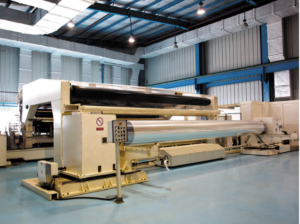The most frequently asked question about plastic packaging films is their expiration date. If we talk about plastic, there is no doubt that plastic has a longer shelf life than any other packaging product, such as paper.
It is not wrong to say that most plastics’ shelf life is almost indefinite when stored properly. Some plastics are designed to degrade relatively quickly when exposed to heat and light, and others may last thousands of years in landfills before significantly degrading, like Nylon.
When it comes to BOPP film, you can not exactly claim that this plastic film never degrades. BOPP films are biodegradable, that’s why they can lose their perfection after some time. BOPP film does not entirely expire; however, its barrier properties may fade with time.

BOPP Films
Factors Affecting the Shelf Life of the Film
It is difficult to accurately determine the shelf life of BOPP films because the deterioration will depend on the following condition:
- Temperature
- Humidity
- Direct sunlight
- Seasonal changes
- Packaged Products
Let’s explore how these factors affect the shelf life of BOPP films.
1. Temperature:
Temperature affects BOPP film’s shelf life by disturbing its barrier properties like water vapour transmission rate (WVTR) and oxygen transmission rate (OTR). The higher temperature increases the WVTR and OTR of BOPP film. As a result, the film will not be able to protect the packaged product from moisture and oxygen.
Due to moisture and atmospheric oxygen entering the product, food items degrade quickly. With the degradation of the packaged items, the film will be of no use. If you want your BOPP film to work for a prolonged duration, you should maintain the warehouse temperature below 35 °C.
Suppose the temperature exceeds due to seasonal change or day & night temperature. In that case, physical changes might occur with a flexible packaging film, and physical deformation like bagginess and slack edge might be encountered.

BOPP Ziplock Bags for Cookies
2. Humidity
The barrier properties of BOPP film are less influenced by humidity than temperature. However, in a humid warehouse, there is more chance of moisture absorption in the packaged products.
The warehouse humidity should be a maximum of 60%. Higher humidity levels can increase the WVTR of the BOPP films. As a result, the shelf life of BOPP films will be reduced.
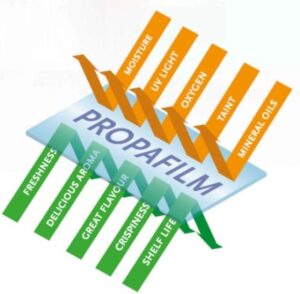
Barrier Properties of BOPP Films
3. Direct Sunlight
Though BOPP films can bear UV rays, keeping them in direct sunlight can cause their degradation. BOPP films are made up of polymer chains. So when this film absorbs UV energy from sunlight, it will excite photons in the material, creating free radicals.
If oxygen is present, the free radicals from oxygen hydro peroxides break the polymer chains (chain scission.). This process is referred to as photo-oxidation. In addition, the presence of humidity, impurities, chemicals, mechanical load, air, temperature or environmental pollutants can accelerate this process. The extreme sunlight can bring the following changes in BOPP film:
- The brittle outer layer (loss of tensile elongation)
- Reduction in molecular weight
- Loss in mechanical properties
- Change in chemical properties
- Discolouration, yellowing
- Fading of colour
- Loss of clarity
- Formation of cracks
4. Seasonal Change
Seasonal change can also affect the shelf life of BOPP films to an extent.
During summer, packaging your products with BOPP films that have been exposed to extreme heat for extended periods will make for complications when packaging your products (melting, sticking, and so on).
On the other hand, intense cold temperatures during winter will cause films to crack if left in such conditions for long periods. If you are lucky, under these conditions, the films might still run ok on your packaging line; however, the films may fail to protect your products adequately.
5. Packaged Products
BOPP films are mainly used for labelling and packaging different food items such as:
- Dairy
- Meat
- Beverages
- Bakery items
- Snacks
The shelf life of BOPP films also depends on the type of packaging product. For example, BOPP film might expire soon if used for packaging meat. Because meat products are highly perishable and highly sensitive to microbiological growth and deteriorative changes, BOPP film cannot keep them safe for a prolonged time.
However, you can extend the shelf life of BOPP packaged by protecting it from physical contamination for approximately one to two days.
On the other hand, using BOPP film for snack packaging might ensure longer shelf life. Snacks like Chips are moisture-free; that’s why they do not degrade quickly.
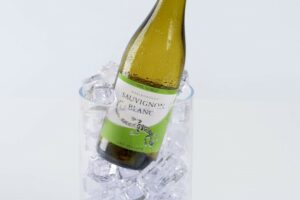
Beverage with BOPP Film Label
Storage Time of Variable BOPP Films
Generally, the shelf life of BOPP film is 3 to 8 months from the time you receive it. Typically, it is usable after that, but if too much time passes, this film might not work properly to store your product.
There is a possibility that your BOPP film may change colour from white/clear to yellow. If you see this colour change, it’s a result of improper warehouse conditions. To enhance the shelf life of BOPP films, they are treated with many coatings. Below are the shelf lives of BOPP films treated with different coatings:
Both Sides Treated Transparent Films
The shelf life of this BOPP film is 3 months. High-quality winding is essential on both sides of the treated film, and high-quality drying at printing, coating, cold seal, etc. It is avoided to direct contact of the processed side with the other treated side.
Pearlized and White Films
This BOPP film can perform well for about 6 months. These films have a propensity to absorb moisture more than other films due to their structure. Therefore they must be protected from moisture.
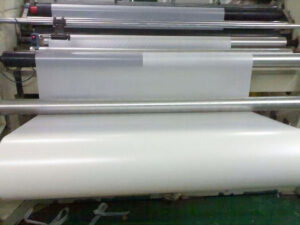
Both Sides Treated Pearlized and White Films
The storage time of this film is 3 months. High-quality winding is required on both sides of the treated film and superb drying at printing, coating, cold seal, etc. It is prevented to direct contact of the processed side with the other treated side.
Metalized Films
These films can protect your product correctly for approximately 6 months.
There is no corona guarantee for the metalized side of the film. It is recommended to use a suitable primer before printing on the metallized side.
Both Sides Treated Metalized Films
These films have a shelf life of about 3 months. There is no corona assurance for the metalized side of the film. The use of a suitable primer is recommended before the printing process on metalized side.
How to Increase the Shelf Life of BOPP Film during Summer and Winter
During summer
If your warehouse and storage area for your BOPP films is exposed to heat in the summer, you will need to implement some form of cooling. Suppose your films are exposed to temperatures exceeding 35 degrees for extended periods of time. In that case, chances are they will be compromised and not be able to be utilized for their applications properly.
In the summer or hot seasons for your geographical area, store your films in the coolest location possible. They should be kept cool, but do not expose them to extreme cold or refrigeration. Generally speaking, the areas closest to the floor of your warehouse are the coolest. Store your BOPP films away from sunlight and keep them on the lowest levels of your pallet racks.
Keep your films away from high-traffic areas and doors, as these spaces may be exposed to regular fluctuations in temperature and are not appropriate for storing your films.
During winter
If BOPP films are exposed to long periods of extreme cold, this will cause them to become brittle and may result in cracking. This will result in sub-par to poor shrinking capabilities. During the winter months, you should also be sure that the areas where you store your films are kept dry and free of moisture.



